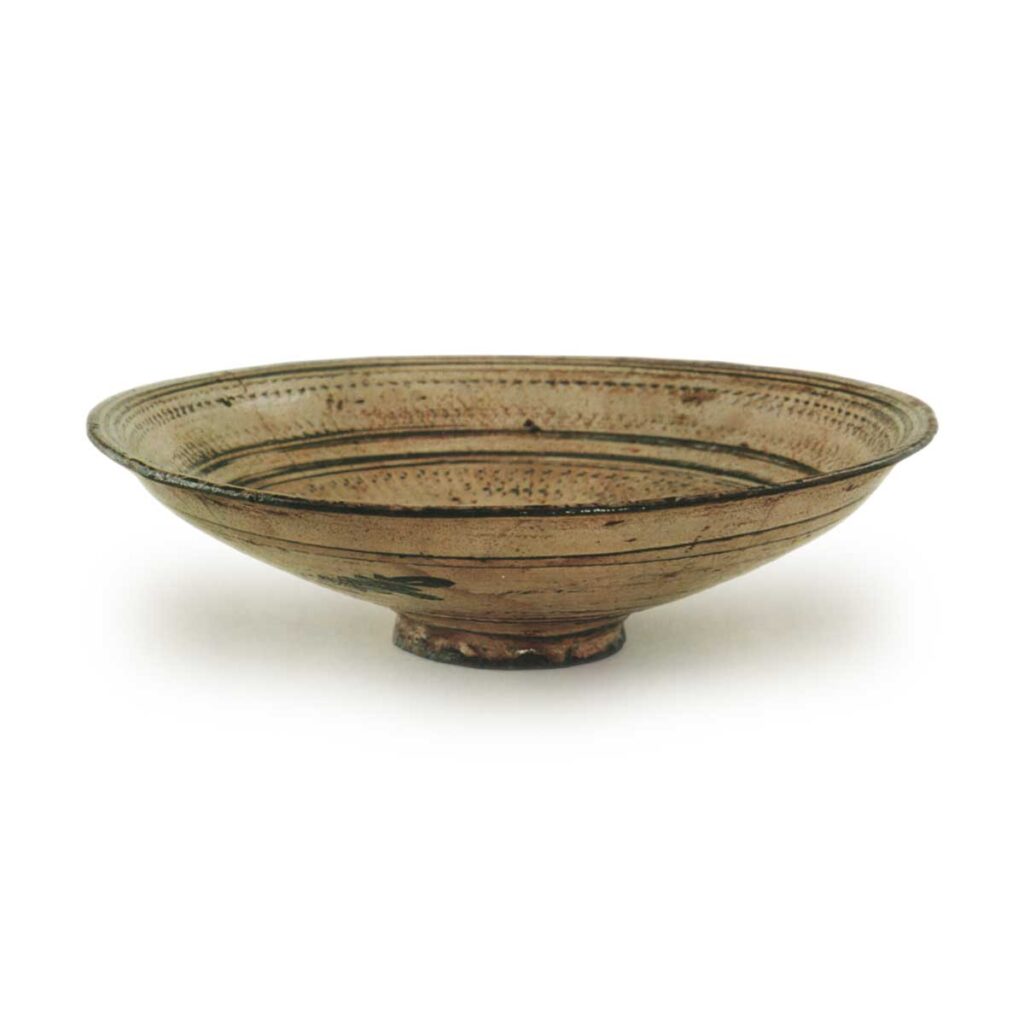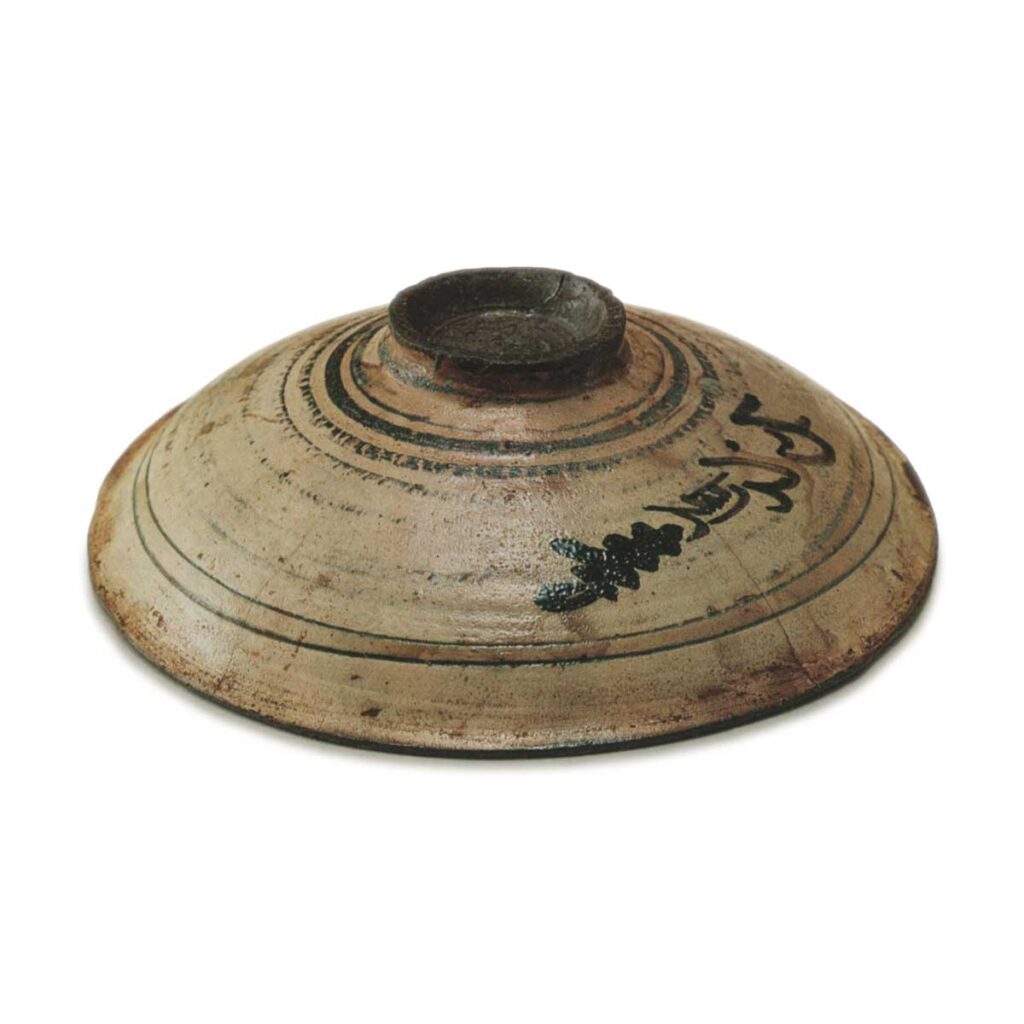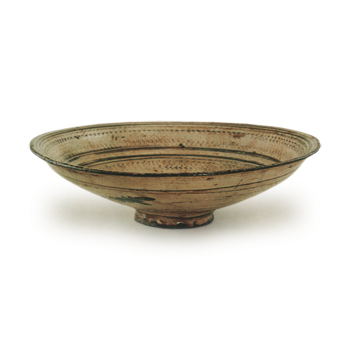

Important Cultural Property
Height: 4.8-5.3cm
Bowl diameter: 19.2cm
Outer diameter of stand: 5.0cm
Height of the upper part: 0.9cm
This is a famous Mishima bowl that was handed down to the Matsuura family of Hirado, and is unusual in that it is marked on the back with a black gouge and the phrase “Naisaiji” written on it.
Some Mishima bowls are decorated with the names of Yi Dynasty government offices, such as Reibin, Heunggok, Injufu, Naiguanji, and Naesuji, and in Japan these are commonly referred to as Reibin Mishima, and are considered to be the most skillful of the three. In April 1417, the 17th year of King Taejong (1417), a decree was passed to prevent the plagiarism of government objects due to the cold weather of the early Yi Dynasty by requiring that the names of government offices and the places where they were made be inscribed on the dishes used in those offices. The name of the government office and the name of the place where it was made were to be inscribed on the plates. If they were used in the private sector, it would be obvious at first glance that they had been stolen from the government.
In the Goryeo period, the temple was called “Ribin-sa,” “Hak-sa,” or “Hyang-ha-sa,” and was a place where foreign envoys and dignitaries were received and entertained. According to an old Joseon book, the temple was in charge of “Guests and guests,” and “Guests and guests,” according to the book. The term “Yeobin Sangdo” originated from this place.
Naesuji Temple was originally called Uiseonggok, following the system of the Goryeo Dynasty, but was renamed Naesuji Temple in the third year of King Taejong (1403). It was a government office in charge of “Naesuji,” “Naesuji,” “Naesuji,” “Naesuji,” “Naesuji,” “Naesuji,” “Naesuji,” “Naesuji,” “Naesuji,” or “Naesi,” was abolished in 1882, the 19th year of King Yi Taejo. Although several items with the characters “naishiji” or “naishi” written on them came to Japan, they are relatively rare, and in particular, I have never seen a teacup with the characters “naishiji” written on it in iron painting other than this one. This Mishima flat tea bowl, inherited from the Matsuura family, has a small sandy base, thinly made, and thinly glazed. The prospective shape, the clay, and the Mishima pattern are all characteristic of the Mishima of Choryongsan.
At the kiln site of Joryongsan in Chungcheongnam-do (South Chungcheong Province), a piece of pottery with the same three-island design and the same “Naesuji” written in iron sand was found, so it is certain that this tea bowl was made at Joryongsan.
The base is a coarse clay mixed with iron-rich sand, and several lines are made inside and outside on the potter’s wheel. The glazed surface is softly glazed with a slight bluish tint at the glaze pools due to the sweetness of the firing.
There are three cracks on the rim, a crack on the base, and some small chips on the edge of the mouth. It is a clean and gentle teacup.
The kiln site of Jiryongsan was extensively excavated at the beginning of the Showa period (1926-1989), and many of the excavated artifacts are now available in Japan. However, Chicken Ryuzan of the succeeding generation is relatively rare, and what is widely known to the public is the “Ueda Rekite” of the Nezu Museum and this flat tea bowl that has been handed down from the Matsuura family.
The white inlays and white makeup have changed to a light candy color.
The inner box is made of paulownia wood with two characters “Reibin” written in vermilion, and the outer box is made of paulownia wood with two characters “Shikou” written by Mashida Bunko.
(The outer box is made of paulownia wood and is inscribed with two characters “Shikou” written by Masuda Nuno.)



